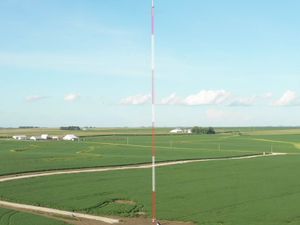Tick population in Scotland could almost double due to climate change – study
It is hoped the research, which examines the density of tick populations in Scotland, could help reduce tick-spread illnesses, such as Lyme disease.
Tick numbers in Scotland could almost double by 2080 due to climate change if temperatures rise by 4C, researchers have warned.
Mathematicians at the University of Stirling’s Faculty of Natural Sciences have developed a new model which predicts tick density under varying climate change scenarios and produced maps showing which areas of Scotland will be worst affected.
Ticks are small arachnid parasites that are found in grassy, woodland areas, often favouring heather in Scotland, and are known to spread viral and bacterial infections such as Lyme disease.
Lyme disease can last for months, or in some cases, years, and symptoms include facial paralysis, arrythmia in the heart, and other symptoms similar to meningitis.
Researchers say that if global temperatures increase by 1C by 2080, the number of ticks in Scotland will increase by 26%.
Should global temperatures increase by 4C, ticks will almost double, with a 99% increase predicted by 2080.
World leaders promised in 2015 to try to limit the long-term temperature rise to 1.5C to help avoid the most damaging effects.

Professor Rachel Norman, who led the study, said: “The model predicted an increase in tick densities and a spread of tick distribution over Scotland for all climate warming scenarios by 2080.
“The strength of these predicted increases in tick density varied depending on the habitat.
“While woodland habitats were predicted to experience the highest absolute increases, the largest proportional increases were predicted for the slopes of mountains, known as montane habitats.
“Many of these areas that were predicted to be tick-free under recent climatic conditions were predicted to become warm enough to allow sustained tick populations by 2080.”
Professor Norman and her team developed a powerful tool that is dynamic and mechanistic, yet mathematically relatively simple so it can be adopted by non-specialists.
In the future, it could be adapted to predict disease risk.
The researchers found that only the highest peaks in Scotland will remain too cold for maintaining tick populations if temperatures rise by 4C.
Professor Norman said: “Scotland is an ideal country for pioneering this approach as the issue of ticks and tick-borne disease risk is of increasing concern with reported increases in tick abundance and Lyme disease incidence.
“This modelling has allowed us to identify which geographic areas and habitats might be particularly vulnerable to increased tick densities owing to climate warming.
“While we developed the approach to predict tick densities over Scotland, it could be easily used for other areas and other vector species, and pathogens could be added to the model, enabling predictions of disease risk.
“Indeed, this methodology could be used more broadly to understand the dynamic response of populations over time to a variety of environmental changes and provides a neat new method in the modelling toolbox for researchers to choose from.”
The paper, titled, GIS-ODE: linking dynamic population models with GIS to predict pathogen vector abundance across a country under climate change scenarios, was published in Interface, a journal of the Royal Society.





